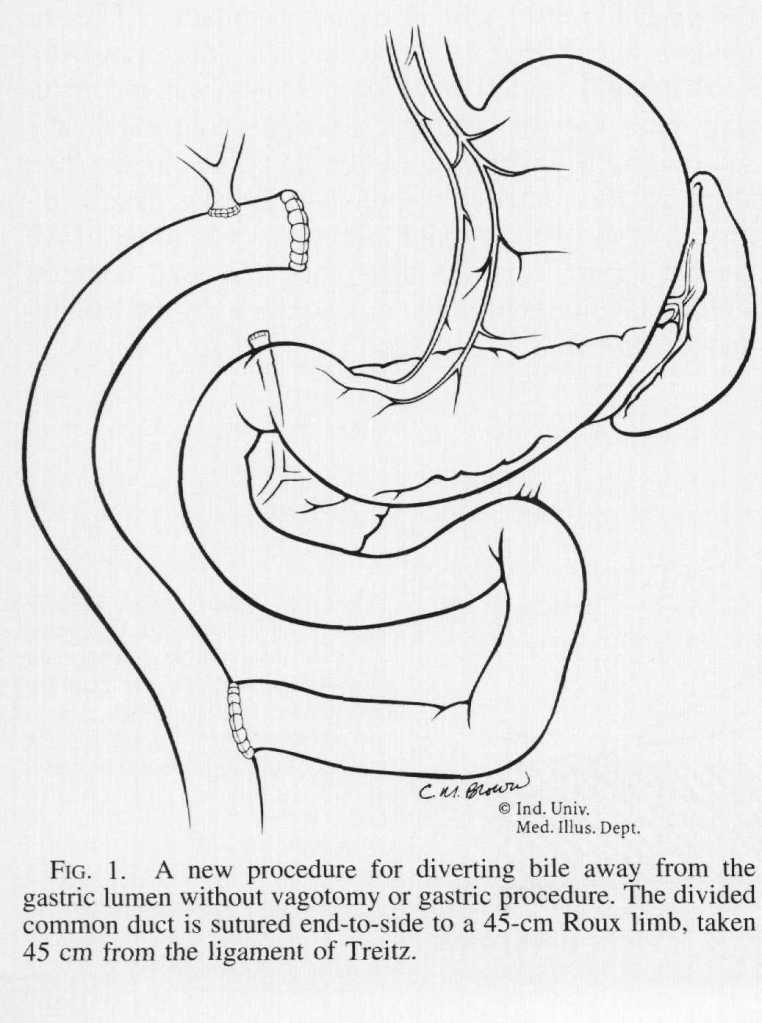“Various treatments for [Primary Bile Reflux Gastritis] have been proposed since its recognition. Operations that have been utilized are the Roux-en-Y procedure, the Braun enteroenterostomy, the Henley jejunal interposition, and several modifications of each of these operations. These procedures produce relief from bile reflux, but all have particular side effects of their own. Before the utilization of vagotomy for ulcer disease, stomal ulceration at the gastrojejunal anastomosis was the most frequent postoperative problem. Currently, the most commonly applied operation is the Roux-en-Y gastrojejunostomy, which requires vagotomy and antrectomy and results in the equally disabling Roux stasis syndrome in about one-half of patients.”
“Because of these difficulties, a new procedure is proposed wherein only bile is diverted by means of a Roux-en-Y limb and no gastric procedure is done. This allows minimal disturbance of gastric motility and totally diverts bile away from the gastric lumen.”

“This procedure was used for 16 patients with diagnosed bile reflux, and results were compared with those of a previous group of 21 patients who had been treated with Roux-en-Y gastrojejunostomy. The patient groups were similar in age, sex, weight, symptoms, and results of investigative studies. The earlier group all had vagotomy, antrectomy, and gastrojejunal anastomosis to a 45-cm Roux limb. The later group all had an end-to-side choledochojejunostomy to a 45-cm Roux limb, taken 45 cm from the ligament of Treitz. The patients in the bile diversion group had fewer complications and shorter hospital stays. In addition, they had few postoperative complaints, no further operations for either bile reflux or upper gastrointestinal stasis, and no long-term deaths due to gastrointestinal problems or malnutrition. Their eventual postoperative gastric emptying improved significantly when compared with the Roux-en-Y patients, suggesting that the dysmotility observed preoperatively may well have been a result of the bile injury to the stomach, rather than an underlying gastric dysmotility.”

“It is concluded, therefore, that if a diagnosis of primary bile reflux gastritis is made, the bile diversion procedure be considered, rather than the Roux-en-Y, Henley jejunal interposition, Braun enteroenterostomy, or any of their modifications, because it is safe and curative and has few, if any, long-term ill effects.”
Madura, J A. “Primary bile reflux gastritis: which treatment is better, Roux-en-Y or biliary diversion?.” The American surgeon vol. 66,5 (2000): 417-23; discussion 423-4. Full Text at Emory.
